Blockchain and 5G: Implications of a possible application in Colombia
Blockchain y 5G: Implicaciones de una posible aplicación en Colombia
Main Article Content
Abstract
Blockchain and 5G technologies have recently gained prominence, especially in academia and science, due to their wide range of applications. These technologies can transform how individuals and the private sector interact and perform transactions. Likewise, it has the potential to revolutionize different industries when used together. However, there are security and privacy challenges in their use. There are approaches in the literature on the union of these technologies, from applications in smart cities to the connection of smart grids. The methodology used in this work is the case analysis, through the review of existing regulations around these technologies in Colombia and the proposal of a possible application in the city of Medellin using the SIAC-M system. Although there are several advantages, there are privacy and security challenges that need to be studied in detail, especially in the blockchain, which at the national level does not seem to have a clear regulation. On the other hand, coverage in 5G seems limited, which may represent a barrier to the application of this technology.
Downloads
Article Details
References (SEE)
Banco Interamericano de Desarrollo. (2016). Estudios de casos internacionales de ciudades inteligentes. https://publications.iadb.org/es/publicacion/17136/estudios-de-casos-internacionales-de-ciudades-inteligentes-medellin-colombia
Bartolomé, A., Bellver, C., Castañeda, L. y Adell, J. (2017). Blockchain en educación: introducción y crítica al estado de la cuestión. EDUTEC, Revista Electrónica de Tecnología Educativa, 61. http://dx.doi.org/10.21556/edutec.2018.61
Cámara de Comercio de Bogotá. (2019). Así va el negocio del Blockchain en Colombia. https://www.ccb.org.co/Clusters/Cluster-de-Software-y-TI/Noticias/2019/Agosto-2019/Asi-va-el-negocio-de-blockchain-en-Colombia
Chaer, K. Salah, K. Lima, C., Ray, P. y Sheltami, T. (2019). Blockchain for 5G: Opportunities and Challenges. IEEE Globecom Workshops, 1-6. https://api.semanticscholar.org/CorpusID:212646052
Constaín, S., Mantilla, I., Rueda, G., Trujillo, L., Barrera, J., Thiriat, P., Ustate, A., Triviño, H., Agudelo, O. (2019). Plan 5G Colombia. https://mintic.gov.co/portal/715/articles-118058_plan_5g_2019120.pdf
Ericsson. (s.f.). 5G por Ericsson. https://www.ericsson.com/en/5g#:~:text=5G%20is%20the%20fifth%20generation,opportunities%20for%20people%20and%20businesses
Ferrer, A., y Sánchez, E. (2019). Aplicaciones de la tecnología blockchain en la documentación científica: situación actual y perspectivas. Información y comunicación biomédica, 28(2). https://doi.org//10.3145/epi.2019.mar.10
Gallitto, L. (2017). Compartición de Espectro: Impactos y oportunidades para el Futuro. https://www.itu.int/en/ITU-R/seminars/rrs/RRS-17-Americas/Documents/Forum/4_GSMA_Lucas%20Gallito.pdf
García, L., Jiménez, J., Abdullah, M., y Lloret, J. (2018). Wireless technologies for IoT in smart cities. Network Protocols and Algorithms, 10(1), 23-64. http://hdl.handle.net/10251/100985
GSMA. (2012). Explicación del roaming móvil. América Latina. https://www.gsma.com/latinamerica/wp-content/uploads/2012/08/GSMA-Mobile-roaming-web-Spanish.pdf
Nguyen, D., Pathirana, P., Ding, M., y Seneviratne, A. (2020). Blockchain for 5G and beyond networks: A state of the art survey. Journal of Network and Computer Applications, 166. https://www.sciencedirect.com/science/article/abs/pii/S1084804520301673
nPerf. (s.f.). Mapa de cobertura 5G en todo el mundo. https://www.nperf.com/es/map/5g
Ministerio de las Tecnologías de la Información y las Comunicaciones (2020). Guía de referencia para la adopción e implementación de proyectos de tecnología blockchain para el Estado colombiano. https://gobiernodigital.mintic.gov.co/692/articles-161810_pdf.pdf
Mahmoud, R., Yousuf, T, Aloul, F., y Zualkernan, I. (2015). Internet of things (IoT) security: Current status, challenges and prospective measures. 10th International Conference for Internet Technology and Secured Transactions (ICITST), 336-341. https://doi.org//10.1109/ICITST.2015.7412116
Ookla. (s.f.). Mapa 5G de Ookla. https://www.speedtest.net/es/ookla-5g-map
Plataformas. (9 de septiembre de 2020). DIRECTV LANZA EL PRIMER PLAN DE INTERNET 5G PARA HOGARES EN COLOMBIA. https://plataformas.news/operadores/nota/directv-lanza-el-primer-plan-de-internet-5g-para-hogares-en-colombia
Prieto, D. (2015). Análisis de los factores del entorno bajo el enfoque de PESTEL y DAFO para el proyecto empresarial “FEQUIMA”: Portal web de maquinarias, equipos y herramientas en Brasil. Sapienza Organizacional, 2(3), 129-152. https://www.redalyc.org/articulo.oa?id=553056601009
Ríos, P. (2020). De la Ciudad Industrial a la Ciudad Informacional: Impactos territoriales de las Tecnologías de la Información y las
Comunicaciones -TIC- en la transformación de Medellín (2008 – 2020). [Tesis de grado]. Universidad Nacional de Colombia. https://repositorio.unal.edu.co/bitstream/handle/unal/80628/1035223607.2021.pdf?sequence=2&isAllowed=y
Rose, K., Eldridge, S., y Chapin, L. (2015). The internet of things: An overview. The internet society (ISOC), 80, 1-50. https://www.internetsociety.org/wp-content/uploads/2017/08/ISOC-IoT-Overview-20151221-en.pdf
Superintendencia de Industria y Comercio. (2018). Block Chain: La revolución de la confianza digital. Boletín Tecnológico. https://www.sic.gov.co/sites/default/files/files/Propiedad%20Industrial/Boletines_Tecnologicos/Boletin_Blockchain.pdf
Universidad de la Salle Oaxaca (s.f). ¿Qué es el Bitcoin? Proyectos estudiantiles. https://noticias.ulsaoaxaca.edu.mx/wp-content/uploads/2021/01/QU%C3%89-ES-EL-BITCOIN.pdf
Vargas, S. (12 de julio de 2021). Los pasos de Colombia hacia 5G. DPL News. https://dplnews.com/los-pasos-de-colombia-hacia-5g/
Wu, G., Talwar, S., Johnsson, K., Himayat, N., y Johnson, N. (2011). M2M: From mobile to embedded internet. IEEE Communications Magazine, 49(4), 36-43. https://api.semanticscholar.org/CorpusID:14394210








